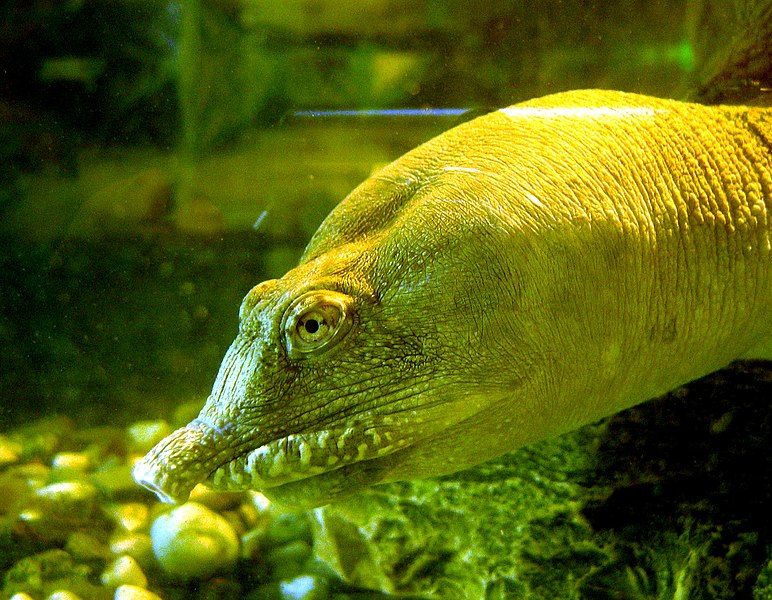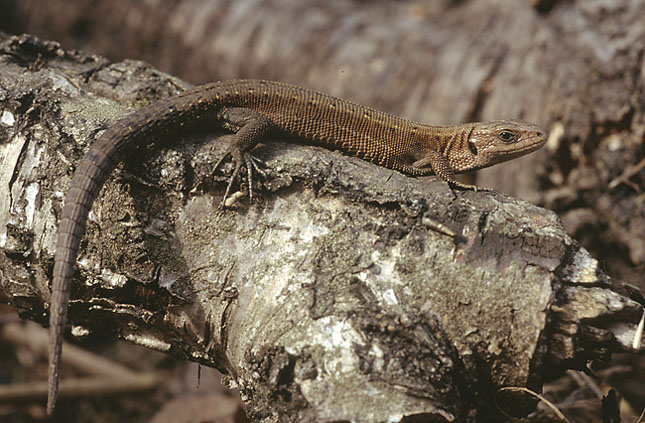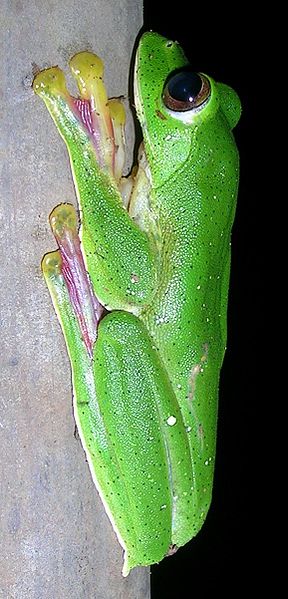 Turtles and other reptiles are full of surprises when it comes to reproduction. In the past few decades we’ve learned that incubation temperature, not genetics, determines the sex of many species, that some have dispensed entirely with males (i.e. the Brahminy Blind Snake) and that the massive Komodo Dragon is capable of reproducing without fertilization. Recently (May, 2011), biologists have determined that turtle embryos move within the egg and actively seek heat. This finding may cause us to re-examine conservation techniques, and raises an array of important questions – i.e., can turtle embryos actually determine what sex they will be? Read More »
Turtles and other reptiles are full of surprises when it comes to reproduction. In the past few decades we’ve learned that incubation temperature, not genetics, determines the sex of many species, that some have dispensed entirely with males (i.e. the Brahminy Blind Snake) and that the massive Komodo Dragon is capable of reproducing without fertilization. Recently (May, 2011), biologists have determined that turtle embryos move within the egg and actively seek heat. This finding may cause us to re-examine conservation techniques, and raises an array of important questions – i.e., can turtle embryos actually determine what sex they will be? Read More »
Category Archives: Recent Research
Feed SubscriptionRecent Field Research – Unusual Snake and Frog Feeding Observations
Many interesting field research reports are published in professional journals such as Copeia, Herpetologica and Herpetological Review, and are not available on the internet. From time to time I’ll provide summaries of some of the fascinating articles that I come across. Today’s report, drawn from Autumn, 2010 publications, covers a favorite topic of mine – feeding records. As theses reports show, snakes and frogs often do battle – and the results are hard to predict!
Fer-de-lance and Smoky Jungle Frogs: Venom vs. Poison
In Costa Rica, a Fer-de-lance partially swallowed and regurgitated a Smoky Jungle Frog. The snake was rendered lethargic incapable of defending itself for at least 45 minutes (and would likely not repeat the experience!). Smoky Jungle Frogs produce Leptotoxin, a powerful chemical that causes rapid death from cardiac arrest when administered to rats. People have reported experiencing “tingling” sensations after handling Smoky Jungle Frogs. Read More »
Do Your Frogs or Toads Have Trouble Catching Insects?
 I’ve recently observed several frogs and toads to develop difficulties in feeding (American Bullfrogs, Gray Treefrogs, Southern Leopard and Green Frogs; several readers have written to me concerning difficulties with American Toads). It starts with what looks like “bad aim” and progresses to the point where the frogs cannot catch insects at all and must be force-fed. I’ve looked into the problem and found that a Vitamin A deficiency, leading to Short Tongue Syndrome, may be involved (please see this article by Dr. Kevin Wright of the Arizona Exotic Animal Hospital for details). I’d like to request that readers send me their own observations, so that we can learn more about this serious amphibian health problem. Read More »
I’ve recently observed several frogs and toads to develop difficulties in feeding (American Bullfrogs, Gray Treefrogs, Southern Leopard and Green Frogs; several readers have written to me concerning difficulties with American Toads). It starts with what looks like “bad aim” and progresses to the point where the frogs cannot catch insects at all and must be force-fed. I’ve looked into the problem and found that a Vitamin A deficiency, leading to Short Tongue Syndrome, may be involved (please see this article by Dr. Kevin Wright of the Arizona Exotic Animal Hospital for details). I’d like to request that readers send me their own observations, so that we can learn more about this serious amphibian health problem. Read More »
2010’s Reptile Discoveries – New Lizard Species and Facts
 Several newly-discovered lizards and unexpected lizard facts made herp headlines in 2010. From a female-only species to a 6-foot-long, brightly-colored new monitor, each gave us pause to wonder…”what’s next?!
Several newly-discovered lizards and unexpected lizard facts made herp headlines in 2010. From a female-only species to a 6-foot-long, brightly-colored new monitor, each gave us pause to wonder…”what’s next?!
Two Large Monitors
Undiscovered animals tend to be small and non-descript, but not so with Asia’s new contributions to the lizard role call. The Northern Sierra Madre Forest Monitor, Varanus bitatawa, described last year from northern Luzon in the Philippines,is both large – to 6 feet in length – and colorful. Actually, it remained undetected only to herpetologists…local people have been eating it for quite some time. The newly described giant is arboreal and feeds largely upon fruit. Read More »
A Frog First – the Fang-Bearing Tadpoles of the Vampire Flying Frog
 The year 2011 has barely begun, but it is already supplying amphibian enthusiasts with exciting news items. One of the most surprising is the discovery that the tadpoles of the newly-described Vampire Flying Frog, Rhacophorus vampyrus, sport hard, sharp fangs…a previously unknown amphibian adaptation.
The year 2011 has barely begun, but it is already supplying amphibian enthusiasts with exciting news items. One of the most surprising is the discovery that the tadpoles of the newly-described Vampire Flying Frog, Rhacophorus vampyrus, sport hard, sharp fangs…a previously unknown amphibian adaptation.
A Surprise in the Treetops
Biologists from Australia, Vietnam and the USA (North Carolina Museum of Natural Sciences) uncovered the new frog and its odd tadpoles while surveying montane forest canopies on the Langbian Plateau in southern Vietnam. Their findings, published in the journal Zootaxa (please see article below), have left herpetologists wondering just why tadpoles might need such odd mouthparts…certainly not to puncture veins, as their common name suggests! Read More »
 That Reptile Blog – Reptile, Amphibian and Exotic Pet Care and Information
That Reptile Blog – Reptile, Amphibian and Exotic Pet Care and Information
